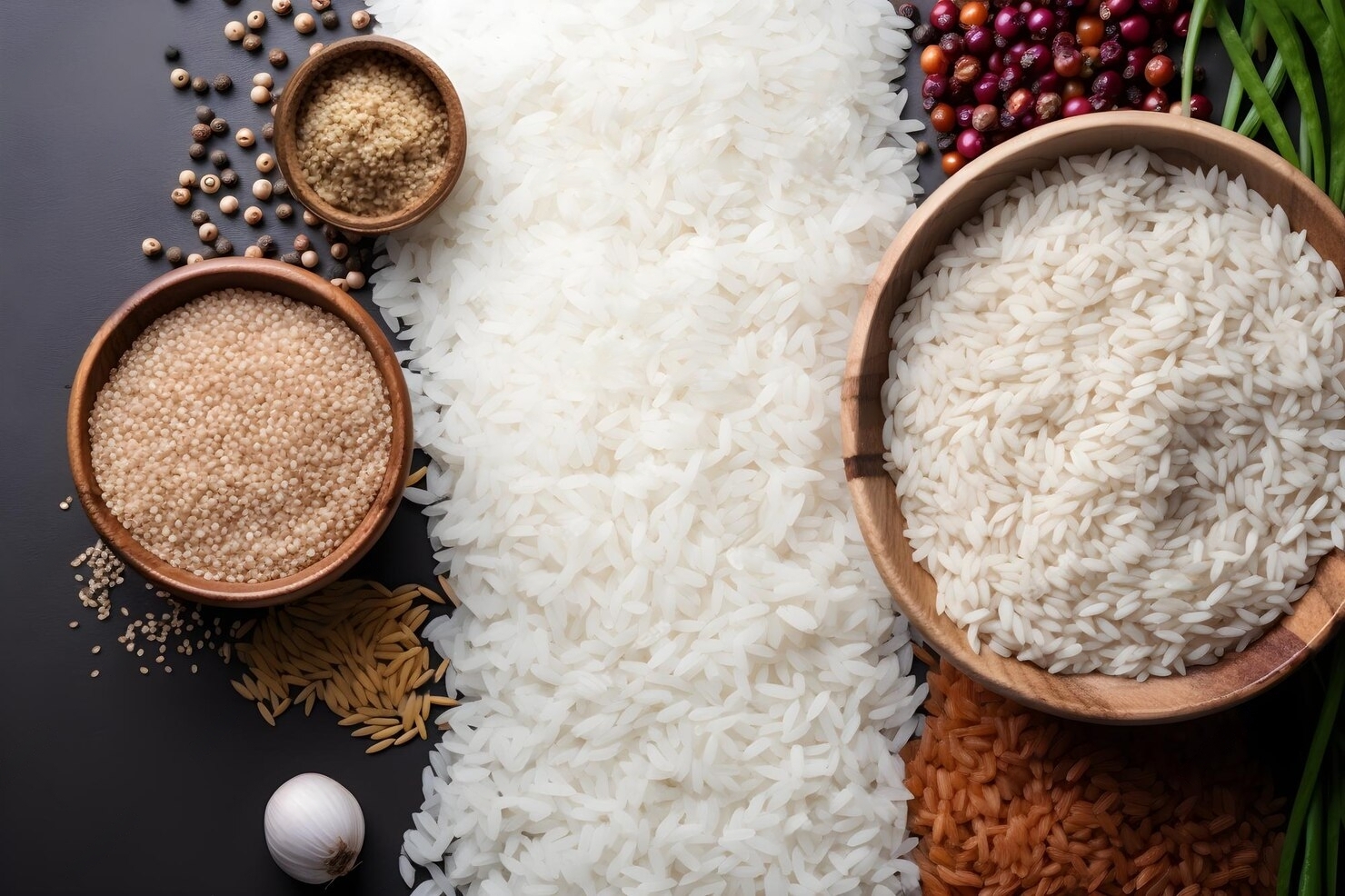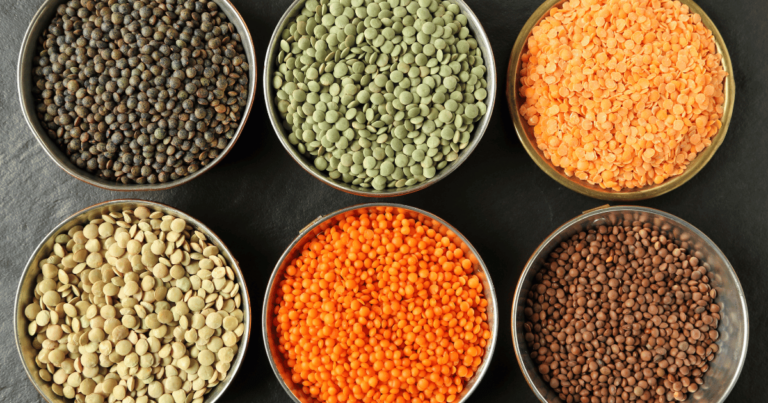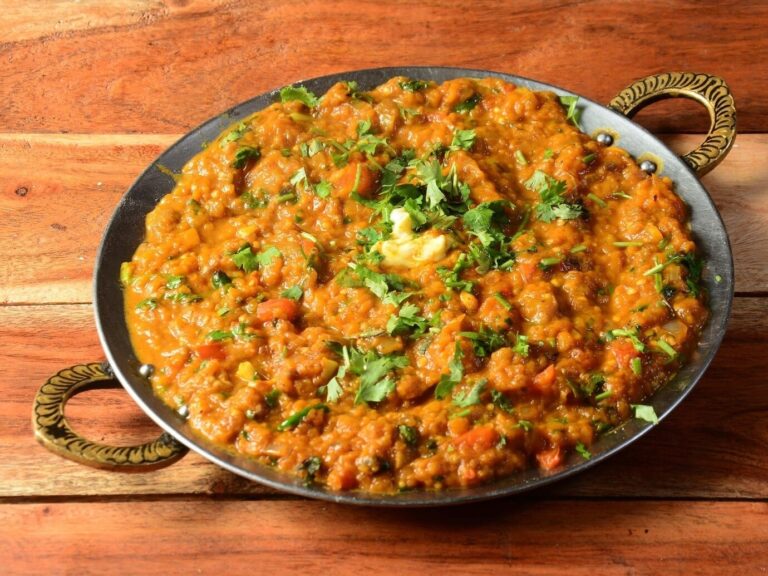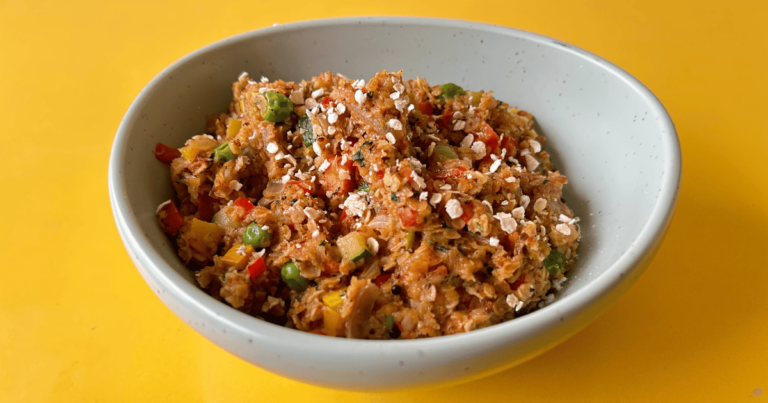Basmati Rice: The Aromatic Jewel of Indian Cuisine
Basmati is a type of long-grain rice recognized for its fragrant aroma and delicate flavor. It is primarily cultivated in the Indian subcontinent and has earned its place as a culinary jewel, both in traditional Indian dishes and international cuisine. In this article, we will delve into the world of Basmati rice, exploring its history, cultivation, varieties, aroma, global significance, and more.
1. Introduction to Basmati Rice
Defining Basmati Rice
Basmati rice, scientifically known as Oryza sativa, is a unique rice variety that stands out for its extraordinary fragrance and slender, elongated grains. The term “Basmati” is derived from the Sanskrit word “vasmati,” which means fragrant. This aroma is the hallmark of Basmati rice and sets it apart from other rice varieties.
Historical Significance
The history of Basmati rice is as rich as its flavor. It has been cultivated in the Indian subcontinent for centuries and holds cultural and historical significance. Basmati rice is mentioned in ancient Indian texts and was often offered as a tribute to kings and emperors.
Aromatic Appeal of Basmati Rice
What makes Basmati rice truly exceptional is its enticing aroma. The grains have a natural fragrance that is often described as nutty or floral. This aroma intensifies during cooking, filling the kitchen with an irresistible scent that adds to the anticipation of the meal.
2. Cultivating the Finest Grains
Geographical Origins
Basmati rice is farmed predominantly in the fertile plains of India. The regions of Punjab, Haryana, and Uttar Pradesh in India and parts of Pakistan are renowned for producing the finest Basmati grains. The unique soil and climate conditions in these areas contribute to the rice’s distinctive characteristics.
Ideal Growing Conditions
Cultivating Basmati rice requires specific environmental conditions. It thrives in regions with high humidity and temperatures, allowing it to develop its aroma. Adequate water supply is crucial for the rice to flourish, and the fields are often submerged in water during its growth phase.
Harvesting Techniques
The harvesting of Basmati rice is a delicate process. It is typically done by hand to prevent damage to the grains. The timing of the harvest is critical, as it affects the rice’s aroma and flavor. Grains are left in the field to dry naturally, enhancing their fragrance.
3. Varieties of Basmati Rice
Traditional Basmati Rice
The traditional Basmati rice is the most well-known variety. It has long, slender grains that elongate further during cooking. This variety is celebrated for its aromatic quality and remains a staple in Indian households.
Pusa Basmati
Pusa Basmati is a newer variety developed through agricultural research. It is known for its shorter cooking time and a similar aroma to traditional Basmati. Pusa Basmati has gained popularity for its convenience in cooking.
1121 Basmati
The 1121 Basmati is another modern variant of Basmati rice. It has exceptionally long grains and a unique aroma. This variety is favored by many for its elegance and presentation in dishes.
4. The Aroma of Basmati Rice
Chemical Composition
The delightful aroma of Basmati rice can be attributed to its chemical composition. It contains natural aroma compounds like 2-acetyl-1-pyrroline, which is responsible for its nutty fragrance. This compound is also found in jasmine rice and contributes to its sweet scent.
The Role of Aroma in Culinary Delights
The aroma of Basmati rice plays a pivotal role in Indian cuisine. It complements the flavors of various dishes, enhancing the overall dining experience. The fragrance is especially pronounced in dishes like Biryani and Pulao.
Aromatization Process
The aroma of Basmati rice intensifies during cooking. As the rice absorbs water and steams, the aroma compounds are released. The grains swell and elongate, resulting in a fluffy and aromatic final product.
5. Basmati Rice on the Global Stage
Export and Trade
Basmati rice has not remained confined to the Indian subcontinent. It has gained recognition on the international stage and is one of India’s major agricultural exports. Countries like the United States, Canada, and the United Kingdom import significant quantities of Basmati rice.
Basmati in International Cuisine
The unique aroma and texture of Basmati rice have made it a favorite ingredient in international cuisines. It is widely used in dishes like Middle Eastern pilafs, Mediterranean rice dishes, and even sushi. Its versatility knows no bounds.
Culinary Fusion
The fusion of culinary traditions has given rise to creative dishes that incorporate Basmati rice. From Mexican-inspired Basmati bowls to Italian-style risottos, this aromatic rice finds its place in diverse culinary creations.
6. Basmati Rice: A Culinary Delight
Classic Indian Dishes
In Indian cuisine, Basmati rice is a star ingredient in various classic dishes. It forms the base for dishes like Biryani, Pulao, and Jeera rice. Its ability to absorb flavors and aromas makes it an ideal choice for these delicacies.
International Recipes
Beyond Indian cuisine, Basmati rice is embraced in global recipes. It is a preferred choice for dishes like paella, where its separate grains and aroma add to the authenticity of the dish. It also features the creation of delectable sushi rolls.
Versatility in Cooking
Basmati rice is known for its versatility in cooking. It can be used to make both savory and sweet foods. From savory pilafs to creamy rice puddings, it adapts to various cooking styles.
7. The Nutritional Profile of Basmati Rice
Macronutrients
Basmati rice is a source of essential macronutrients. It provides carbohydrates, which are a primary energy source. The rice is low in fat and cholesterol, making it a healthy choice for those conscious of their fat intake.
Micronutrients
In addition to macronutrients, Basmati rice contains essential micronutrients like vitamins and minerals. It is a source of B vitamins, including niacin and thiamin. These vitamins play a vital role in metabolism and overall health.
Health Benefits
Basmati rice is not only a treat for the palate but also offers health benefits. It is easy to digest and gluten-free, making it suitable for individuals with dietary restrictions. The low sodium content is advantageous for those managing their blood pressure.
8. Cooking Basmati Rice to Perfection
Washing and Soaking
To achieve perfectly cooked Basmati rice, it’s essential to wash and soak the grains. This process helps remove excess starch, resulting in fluffier rice. Soaking for at least 30 minutes before cooking is recommended.
Cooking Methods
There are various methods to cook Basmati rice, including stovetop cooking, rice cookers, and microwave cooking. Each method has its advantages, but the key is to ensure that the rice is cooked to perfection, with separate, fluffy grains.
Tips for Fluffy Rice
The secret to fluffy Basmati rice lies in the right water-to-rice ratio and cooking time. Adding a bit of oil or ghee can also enhance the texture. Following these tips ensures a delightful rice experience.
9. Quality Assurance and Grading
Grading Parameters
Quality assurance is paramount in the world of Basmati rice. Grading parameters include the length, aroma, and purity of the grains. Each grain is evaluated to ensure it meets the defined quality standards.
Importance of Quality
Quality is a crucial factor for both consumers and the rice industry. High-quality Basmati rice not only guarantees a delightful culinary experience but also maintains the reputation of this prized variety in the global market.
Authenticity Marks
To distinguish genuine Basmati rice from imitations, authentic brands often carry certification marks. These marks assure consumers of the rice’s authenticity and quality, giving them confidence in their purchase.
10. Basmati Rice Brands
Leading Brands
Several brands have made a name for themselves in the Basmati rice market. Brands like India Gate, Kohinoor, and Tilda are known for their high-quality Basmati rice products. These brands have a strong presence in both domestic and international markets.
Choosing the Right Brand
When selecting Basmati rice, it’s important to choose a reputable brand. Quality can vary, so opting for established brands ensures that you get the authentic Basmati experience. Consumer reviews and recommendations can also be helpful in making a choice.
Authenticity Checks
To further ensure the authenticity of the Basmati rice you purchase, check for certification and quality marks on the packaging. These marks are a reliable indicator of genuine Basmati rice.
11. Basmati Rice and Sustainability
Environmental Impact
The cultivation of Basmati rice has environmental implications. The use of water and other resources in rice farming can impact local ecosystems. Sustainable practices are essential to minimize these effects.
Sustainable Practices
Efforts are being made to promote sustainable Basmati rice farming. Techniques like direct seeding and water-efficient practices are being adopted to reduce the environmental footprint. Sustainable farming benefits both the environment and the livelihoods of farmers.
Ethical Sourcing
Ethical sourcing practices in the Basmati rice industry are gaining importance. Consumers are increasingly concerned about the social and ethical aspects of the products they purchase. Ethical sourcing ensures fair treatment of farmers and workers.
12. Culinary Inspirations with Basmati Rice
Pilaf and Biryani
Basmati rice shines in dishes like Pilaf and Biryani. The grains absorb the flavors of spices and other ingredients, resulting in a delightful medley of tastes and textures. These dishes are enjoyed in various cultures and celebrations.
Risotto and Sushi
Basmati rice is not limited to traditional dishes. It can also be used in unconventional ways, such as preparing risotto with an Indian twist or crafting sushi rolls with Basmati rice as the base. These fusion creations offer a unique dining experience.
Sweet Treats
The versatility of Basmati rice extends to sweet dishes. Rice puddings, kheer, and rice cakes are some of the delectable desserts that can be made with Basmati rice. The rice’s natural fragrance adds an extra layer of flavor to these sweets.
13. Basmati Rice: Cooking Tips and Tricks
Achieving the Perfect Fluff
For perfectly fluffy Basmati rice, it’s essential to measure the water-to-rice ratio accurately. The right amount of water and the appropriate cooking time result in grains that are separate and not overly sticky.
Flavorful Additions
Enhance the flavor of Basmati rice by adding aromatic spices, herbs, and condiments. Ingredients like saffron, cardamom, and cinnamon can elevate the taste of your rice dishes.
Preserving Aroma
To retain the aroma of Basmati rice, it’s recommended to store it in an airtight container in a cool, dry place. Proper storage ensures that the rice maintains its fragrance over time.
14. Basmati Rice in Traditional Rituals
Festivals and Celebrations
Basmati rice holds a special place in traditional Indian rituals and celebrations. It is often used in religious ceremonies and festive offerings. The rice’s purity and aroma symbolize auspiciousness.
Symbolism and Tradition
In various cultures, rice carries symbolic significance. It represents fertility, prosperity, and abundance. The use of Basmati rice in rituals and traditions is a reflection of these cultural values.
Sacred Offerings
Basmati rice is considered sacred in many cultures. It is offered to deities and used in rituals that mark significant life events. The rice’s fragrance is believed to be a divine offering.
15. Basmati Rice in Pop Culture
Literature and Poetry
Basmati rice has made its way into literature and poetry. It often serves as a metaphor for fragrance, elegance, and purity in literary works. Poets and writers have celebrated its aroma in their verses.
Cinema and Music
In the world of entertainment, Basmati rice has been referenced in films and music. It is used to evoke nostalgia, cultural ties, and the essence of home in cinematic and musical compositions.
Advertising and Branding
Brands that sell Basmati rice often use its aroma and quality as central themes in their advertising and branding. These campaigns aim to convey the essence of Basmati rice to consumers.
16. The Future of Basmati Rice
Evolving Trends
The world of food is constantly evolving, and Basmati rice is no exception. New culinary trends and dietary preferences influence the way Basmati rice is used in recipes. Its adaptability ensures its continued relevance.
Emerging Markets
The demand for Basmati rice is not limited to its place of origin. Emerging markets in different parts of the world are discovering the charm of Basmati rice, leading to increased consumption and trade.
Sustainability Initiatives
With growing concerns about the environment, sustainability initiatives in Basmati rice farming are becoming more prevalent. These initiatives aim to strike a balance between meeting the global demand for Basmati rice and preserving the ecosystem.
17. Myths and Misconceptions
Calorie Concerns
There is a common misconception that Basmati rice is high in calories. In reality, it is a calorie-efficient food, making it suitable for various dietary plans.
Gluten Debate
Some individuals wonder if Basmati rice contains gluten. The good news is that Basmati rice is naturally gluten-free, making it a safe choice for those with gluten sensitivities.
Health Considerations
Basmati rice is often considered a healthier option than other rice varieties due to its nutritional profile. However, portion control is essential to maintain a balanced diet.
18. Aromatic Inspiration: Basmati Rice in Your Kitchen
Recipes for Every Occasion
Basmati rice is incredibly versatile and can be used in a wide range of recipes. Whether you’re preparing a family dinner, a special celebration, or a quick weekday meal, there’s a Basmati rice dish for every occasion.
Creative Uses in Cooking
Experiment with Basmati rice in your kitchen. Try infusing it with different spices, herbs, and ingredients to create unique flavor combinations. The possibilities are endless.
Fusion Flavors
Embrace culinary fusion by combining Basmati rice with ingredients from various cuisines. Create your fusion dishes that blend the aroma of Basmati with global flavors.
19. Cultivating Basmati Rice: The Farmer’s Perspective
Challenges in Farming
Basmati rice farming comes with its set of challenges. Climate variability, water management, and pest control are among the issues that farmers must address to ensure a successful harvest.
Farmers’ Stories
Behind every grain of Basmati rice, there’s a story of hardworking farmers. Learn about the lives and experiences of those who cultivate this aromatic rice.
Sustainable Farming Practices
The future of Basmati rice farming lies in sustainable practices. Farmers are increasingly adopting techniques that reduce environmental impact while ensuring the quality of their produce.
20. Conclusion: Basmati Rice – A Culinary Treasure
Culinary Legacy
Basmati rice has a rich culinary legacy that spans generations. Its aroma and versatility have made it an integral part of traditional and modern cuisines.
Versatile and Aromatic
The unique combination of versatility and aroma sets Basmati rice apart. It can be the star of the dish or a subtle complement, making it a favorite among chefs and home cooks alike.
A Grain Worth Celebrating
In the world of rice, Basmati stands out as a grain worth celebrating. Its history, aroma, and contribution to global cuisine make it an indispensable ingredient that continues to enchant taste buds around the world.






